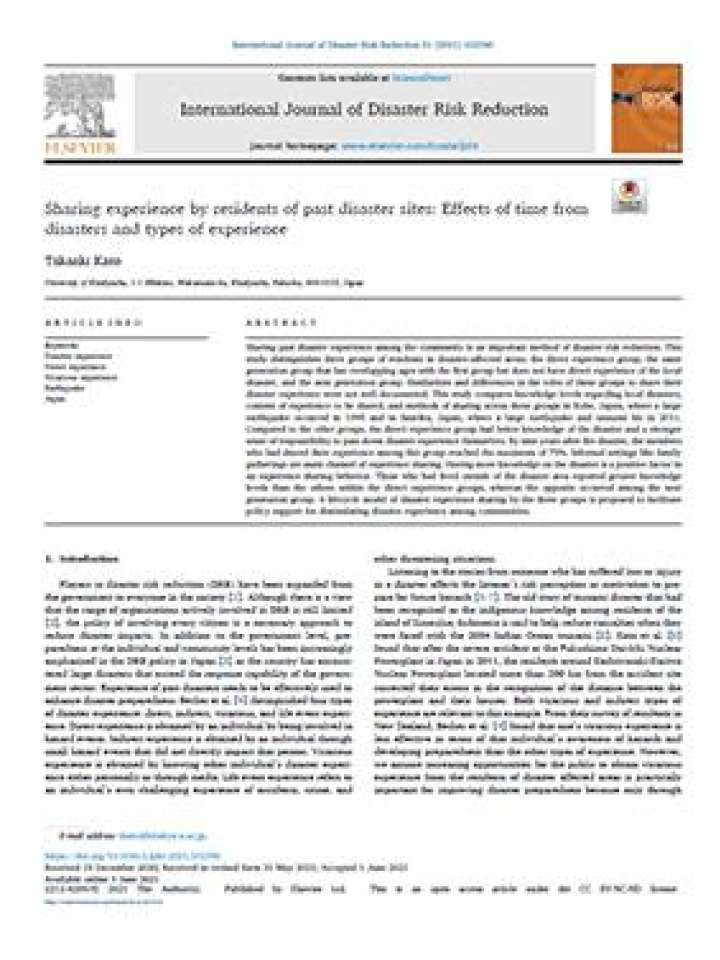Sharing experience by residents of past disaster sites: Effects of time from disasters and types of experience
This report discusses how sharing past disaster experience among the community is an important method of disaster risk reduction. This study distinguishes three groups of residents in disaster-affected areas: the direct experience group, the same generation group that has overlapping ages with the first group but does not have direct experience of the local disaster, and the next generation group.
Similarities and differences in the roles of these groups to share their disaster experience were not well documented. This study compares knowledge levels regarding local disasters, content of experience to be shared, and methods of sharing across these groups in Kobe, Japan, where a large earthquake occurred in 1995 and in Sanriku, Japan, where a large earthquake and tsunami hit in 2011. Compared to the other groups, the direct experience group had better knowledge of the disaster and a stronger sense of responsibility to pass down disaster experience themselves.
By nine years after the disaster, the members who had shared their experience among this group reached the maximum of 75%. Informal settings like family gatherings are main channel of experience sharing. Having more knowledge on the disaster is a positive factor in an experience sharing behavior. Those who had lived outside of the disaster area reported greater knowledge levels than the others within the direct experience groups, whereas the opposite occurred among the next generation group. A lifecycle model of disaster experience sharing by the three groups is proposed to facilitate policy support for dissimilating disaster experience among communities.
Explore further
